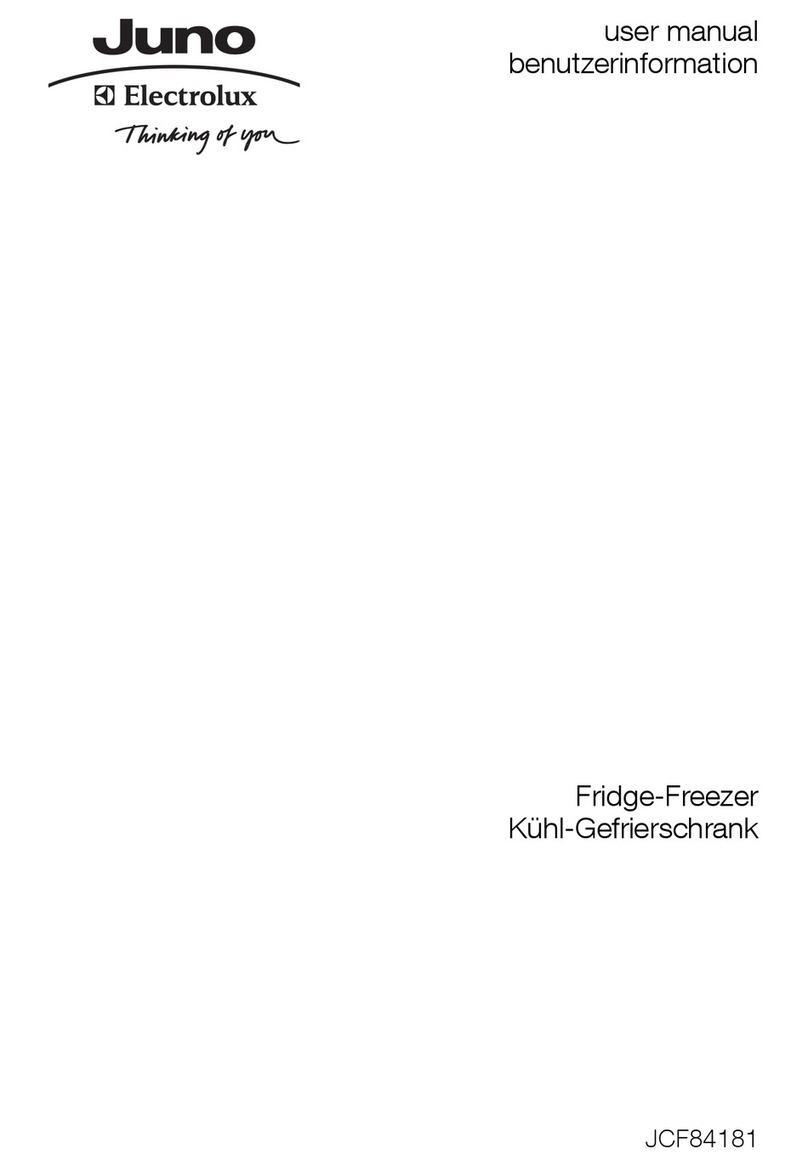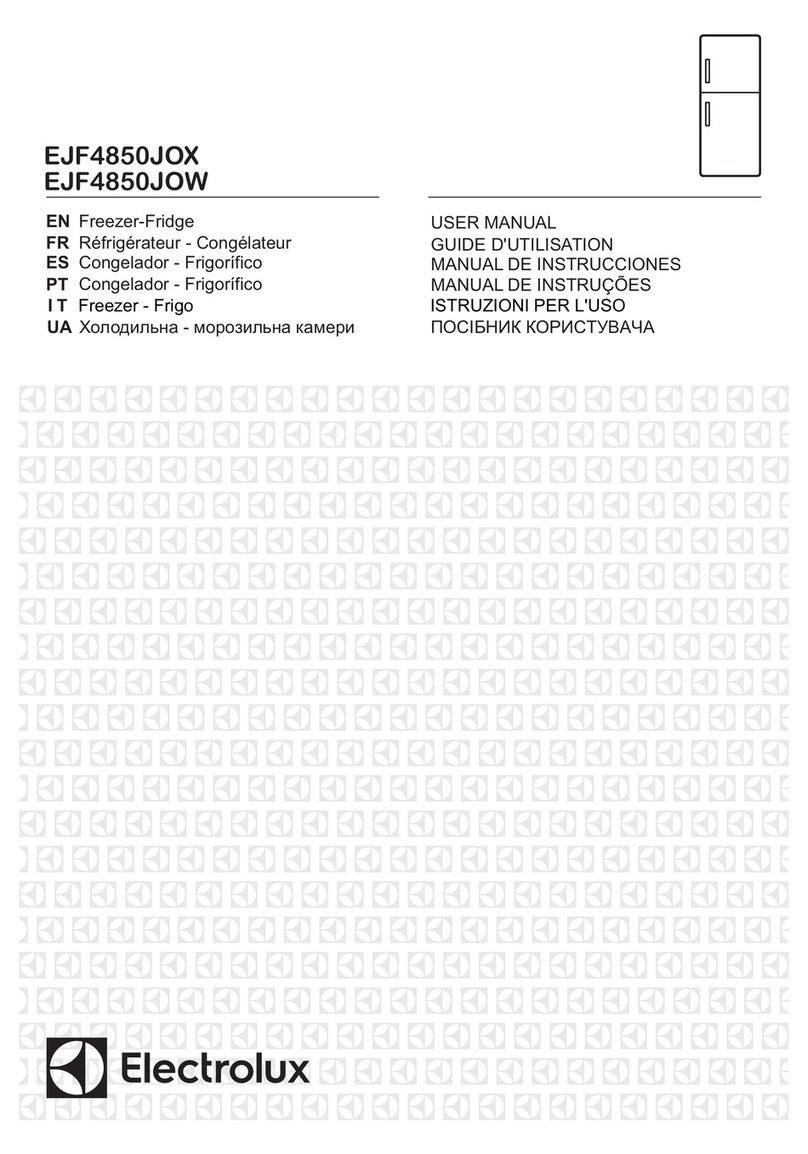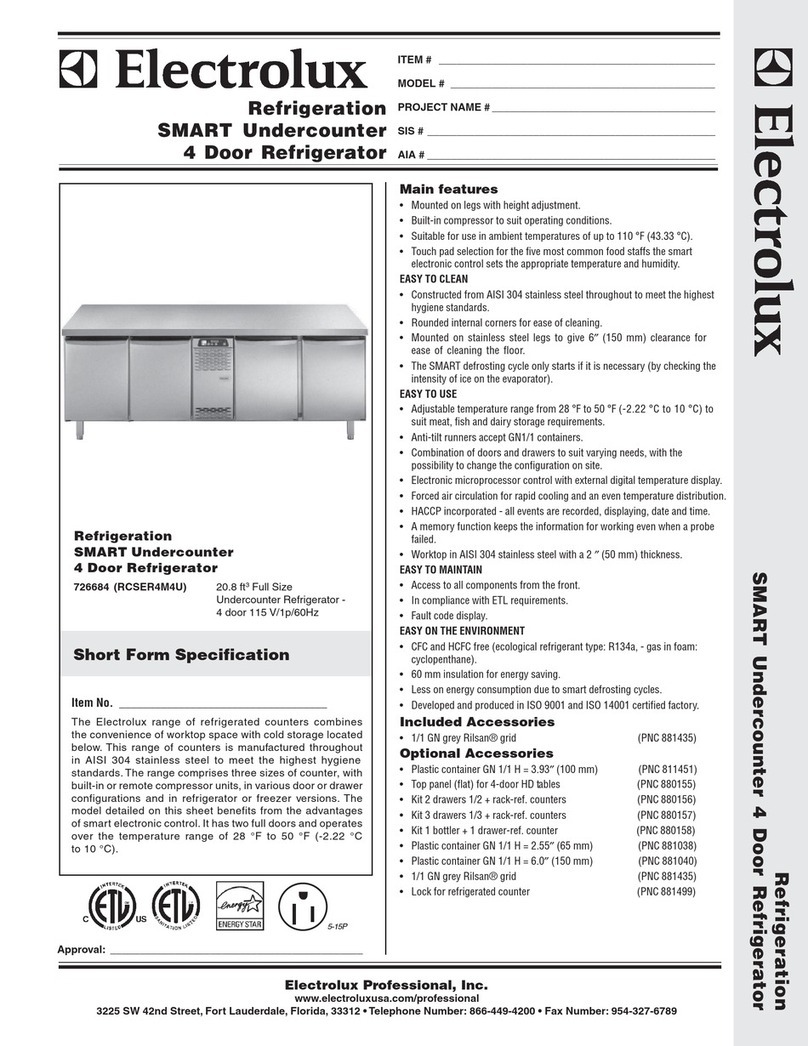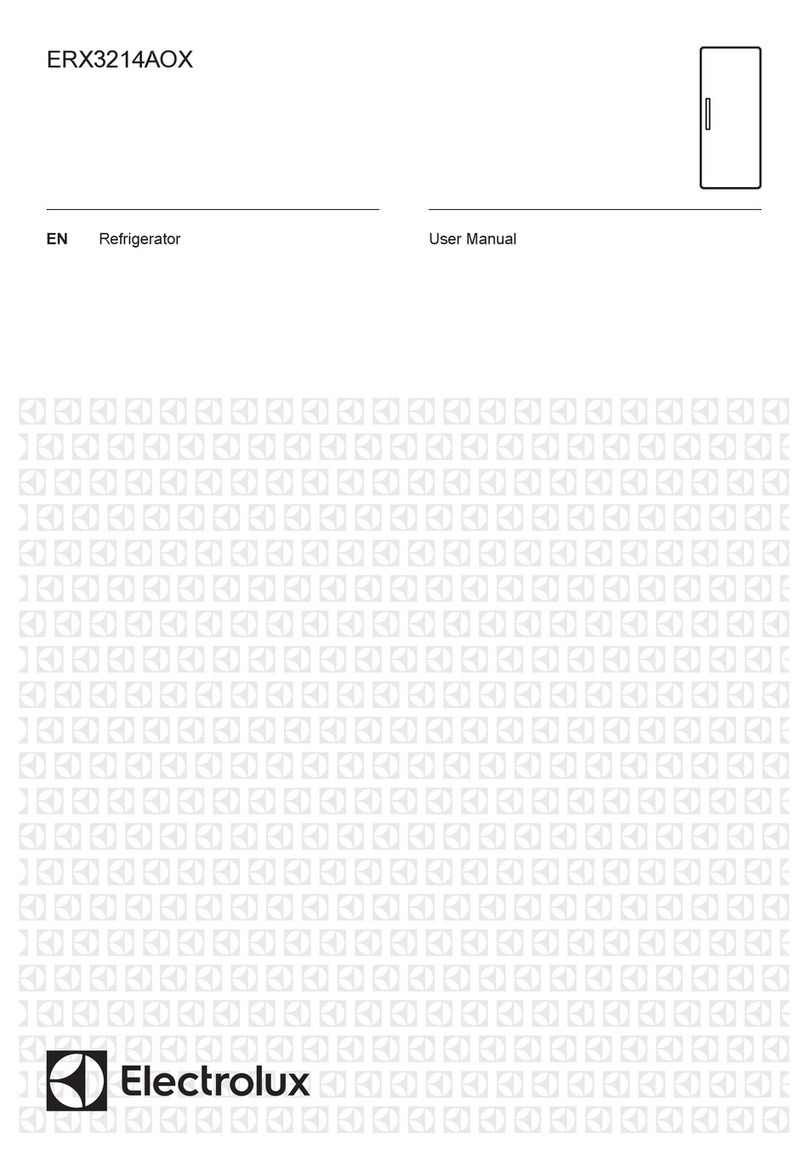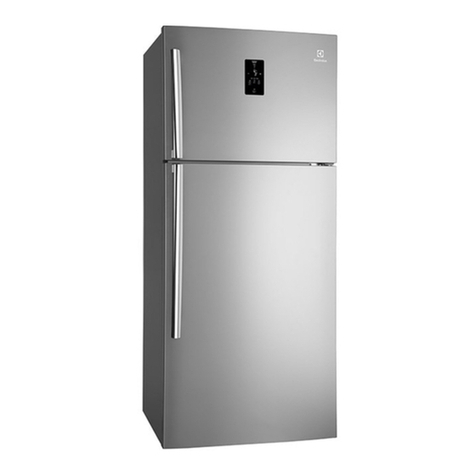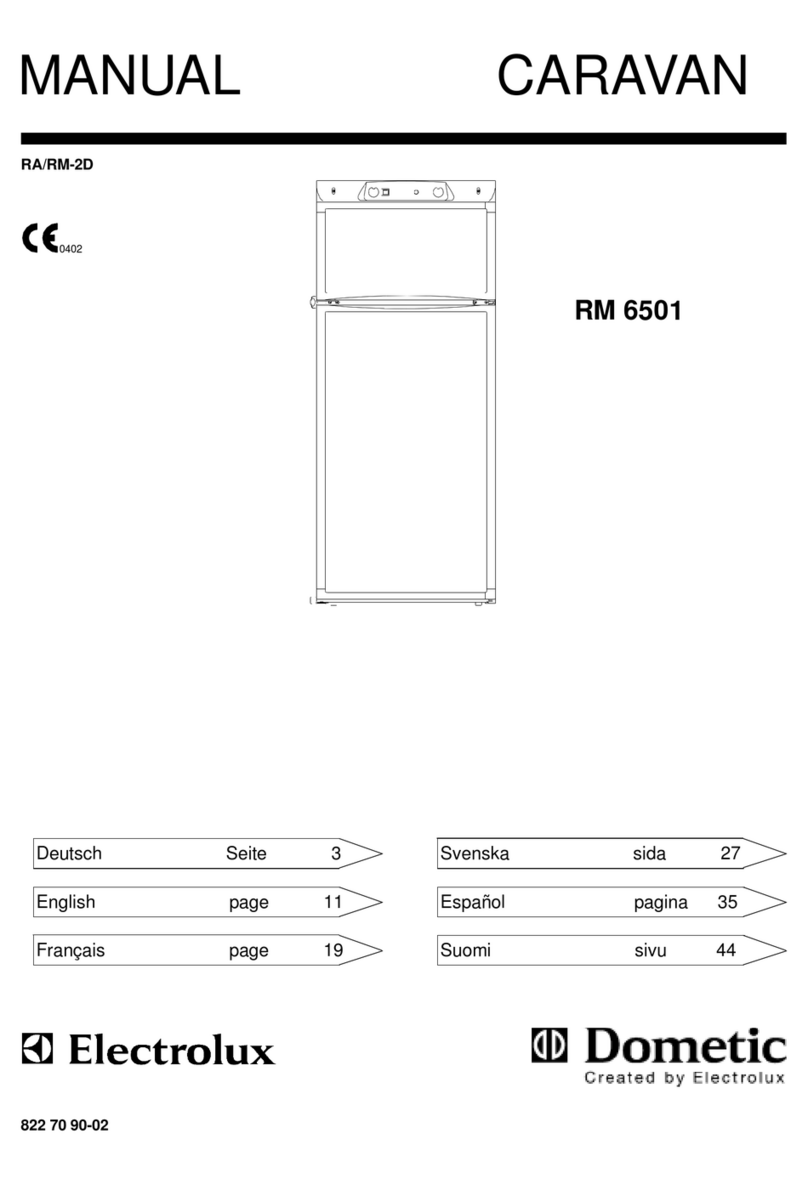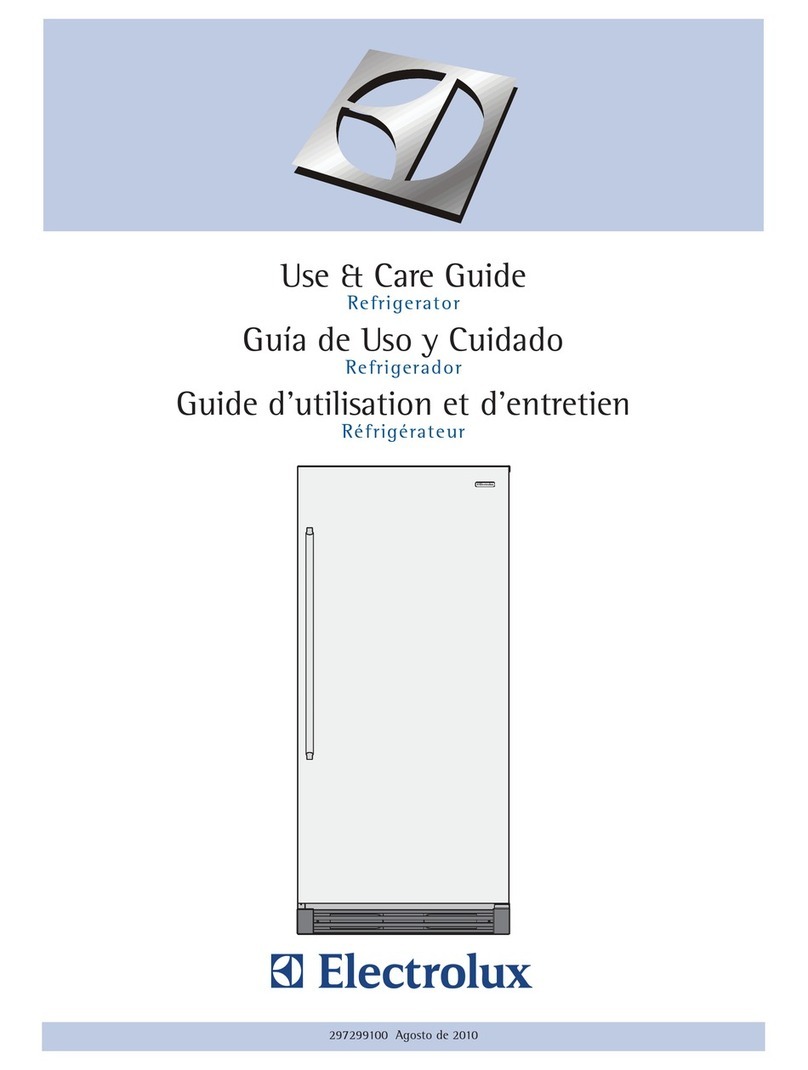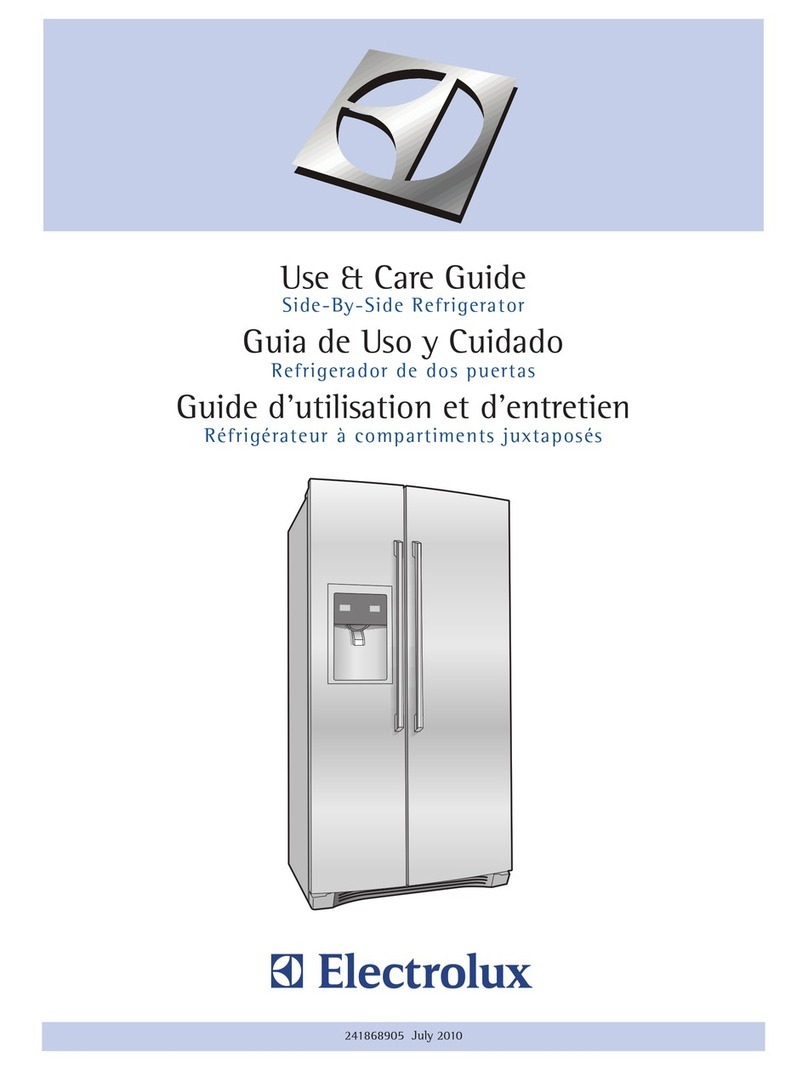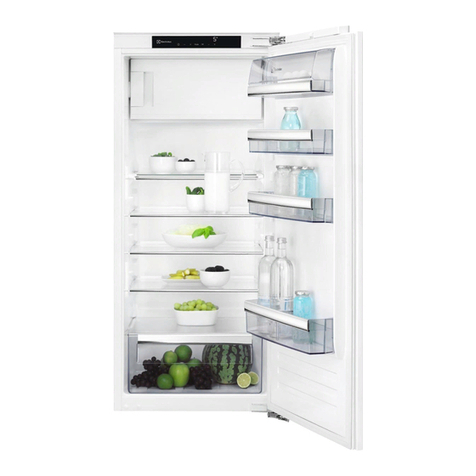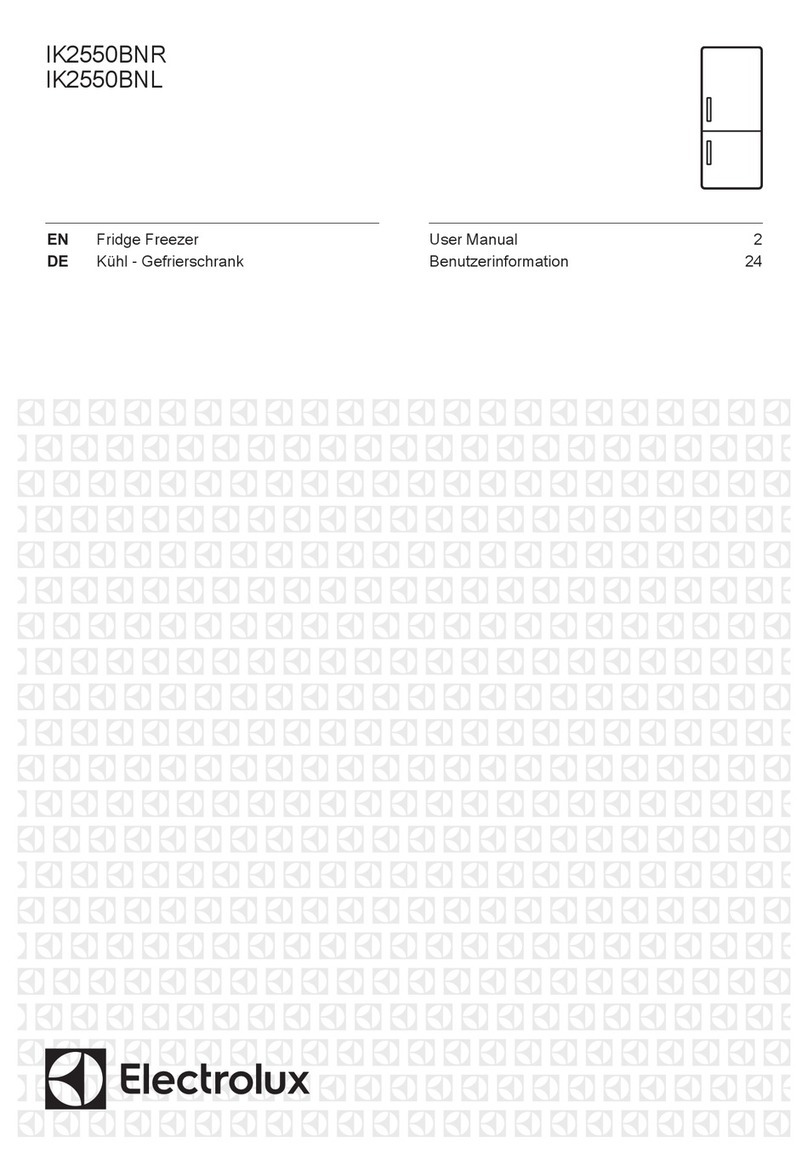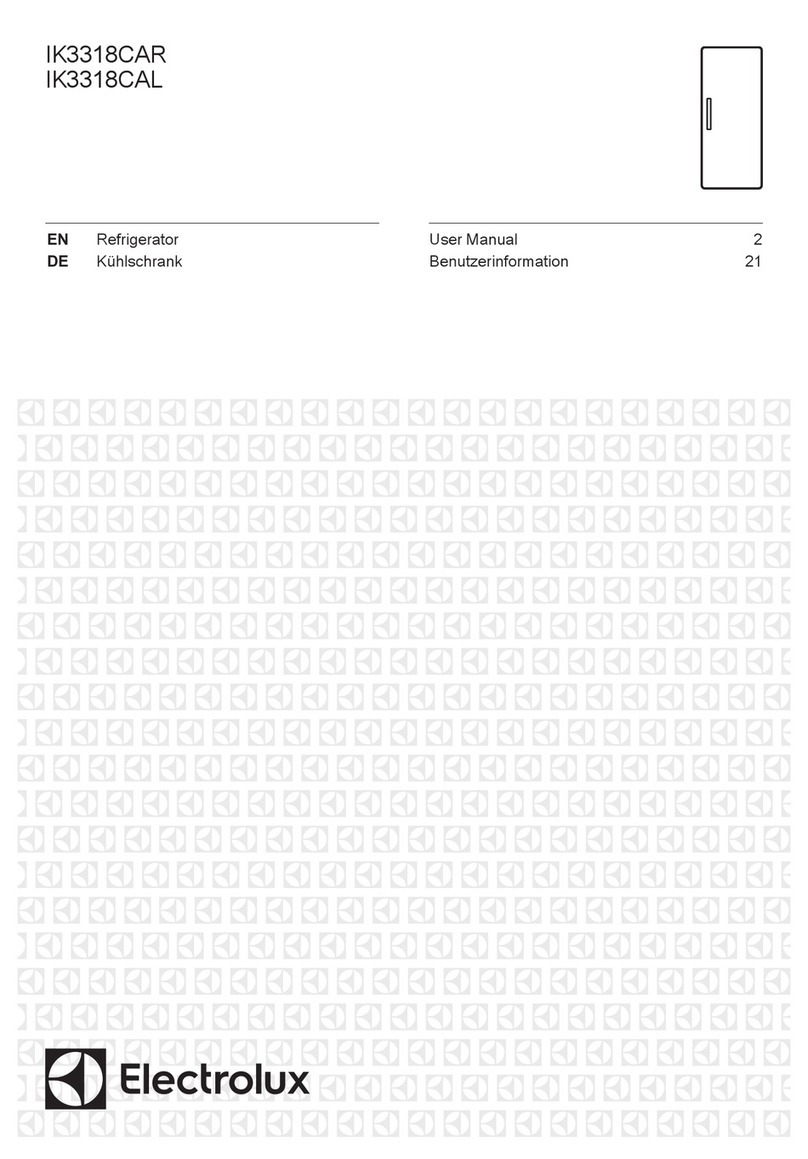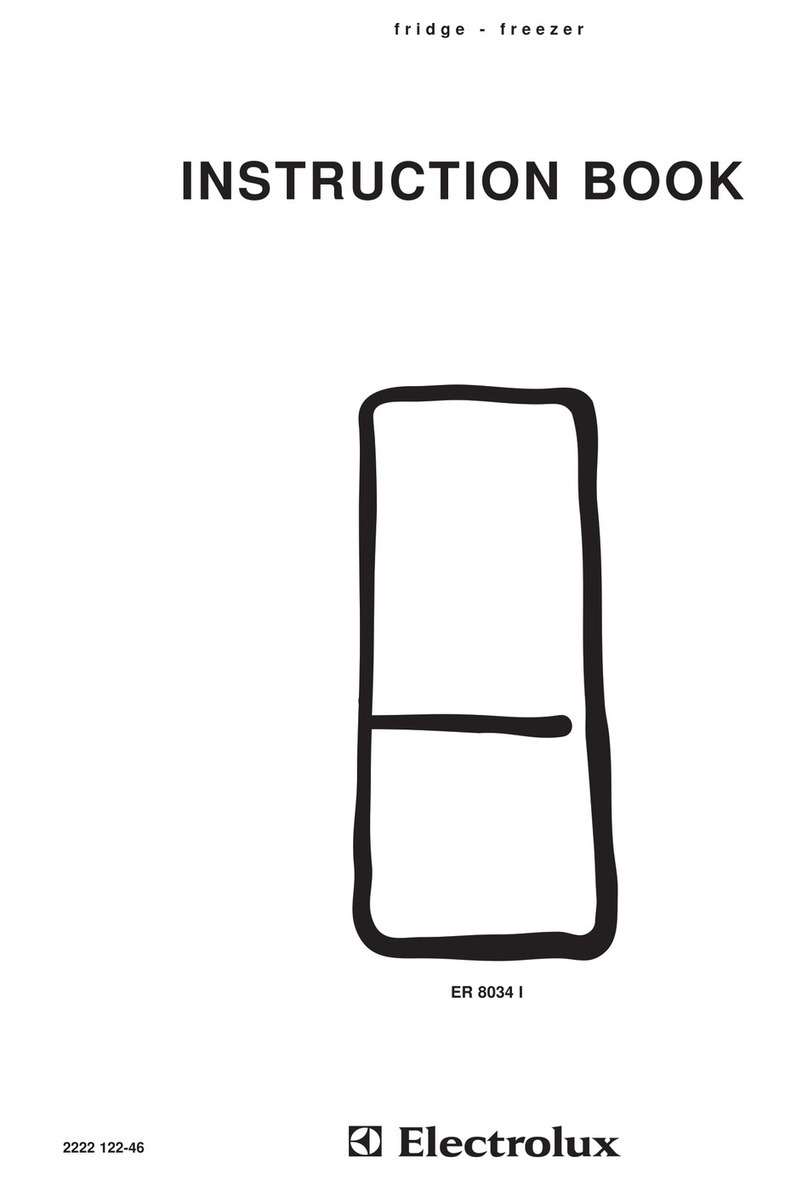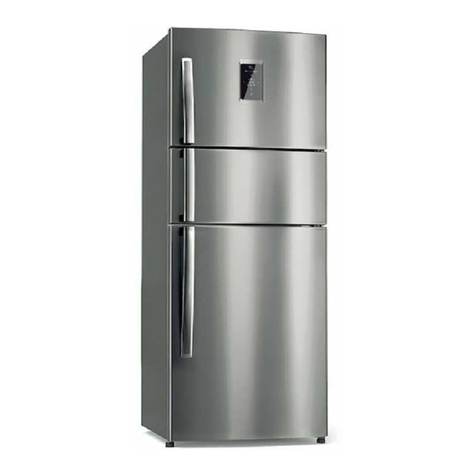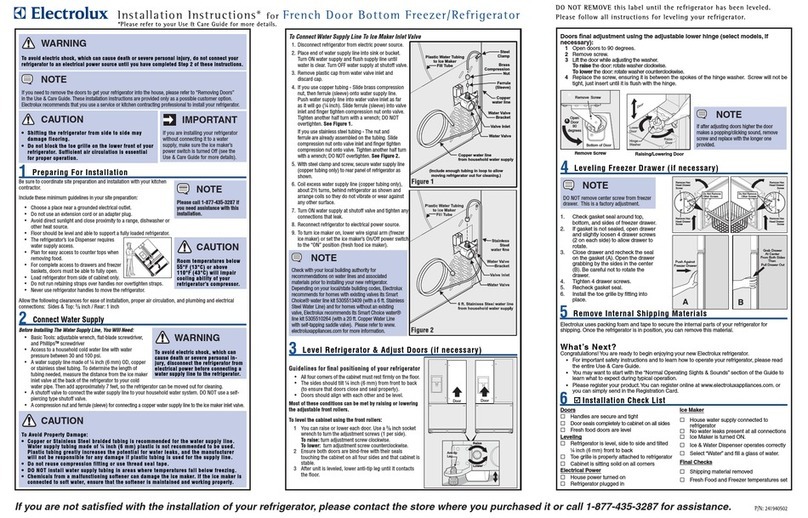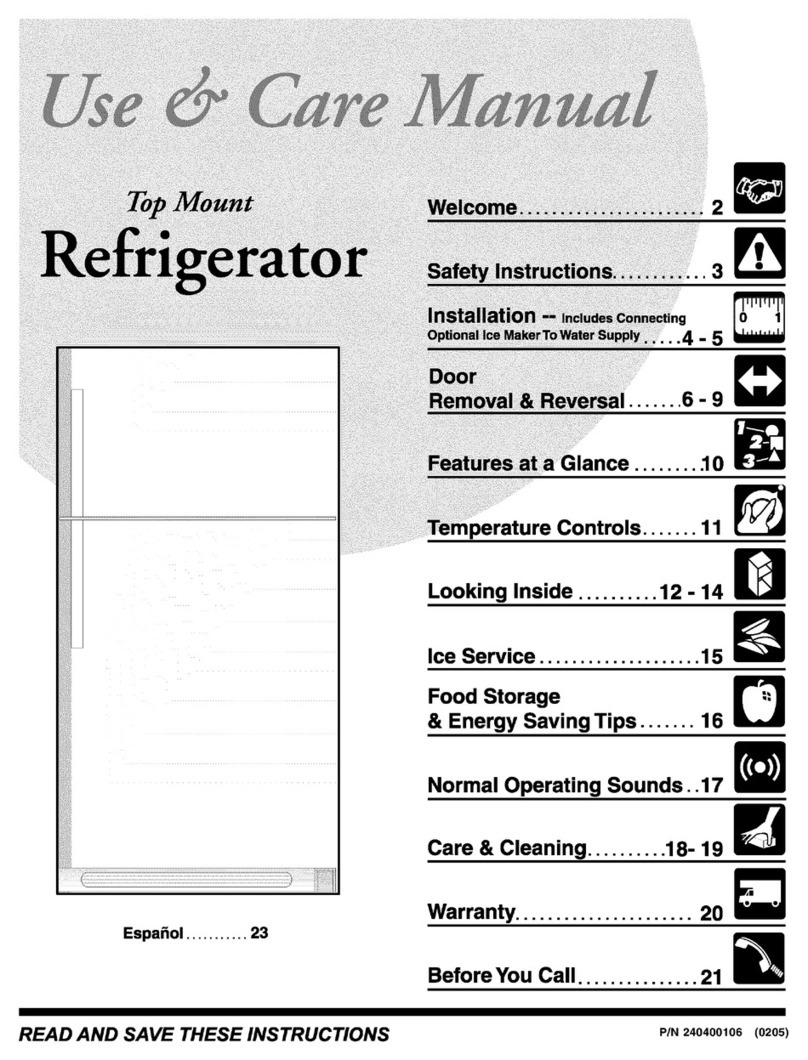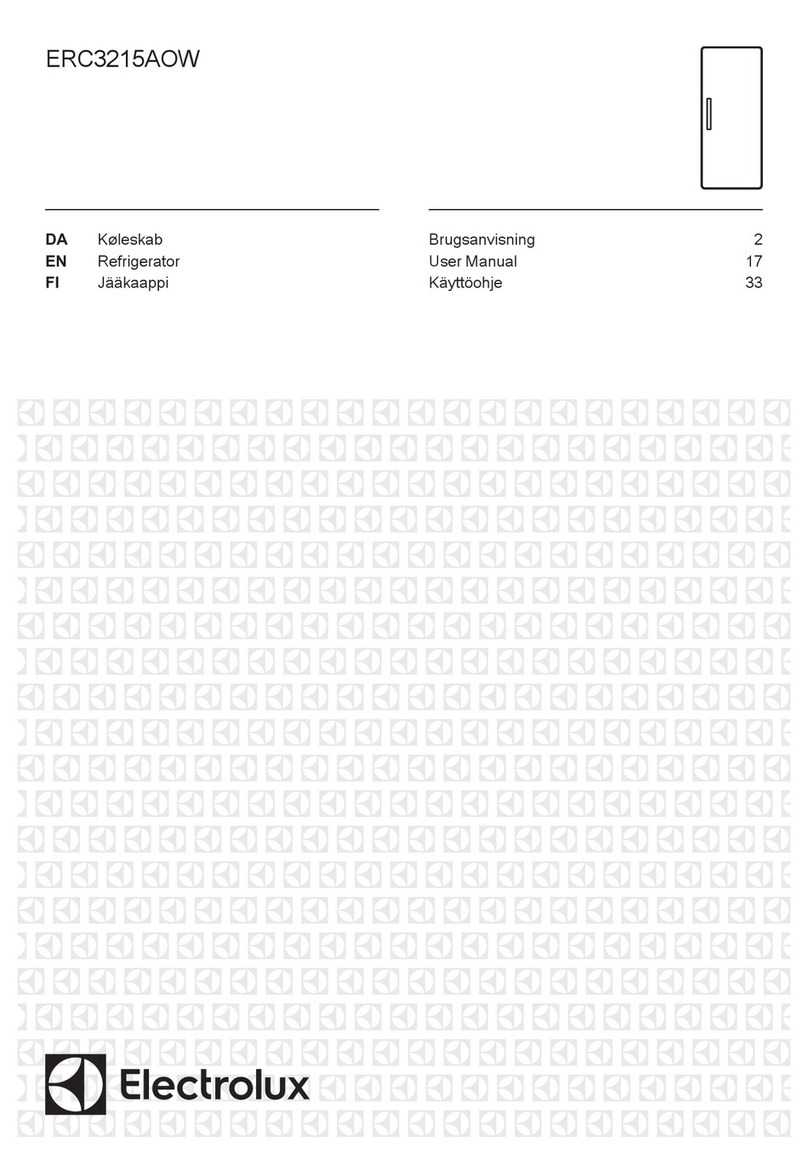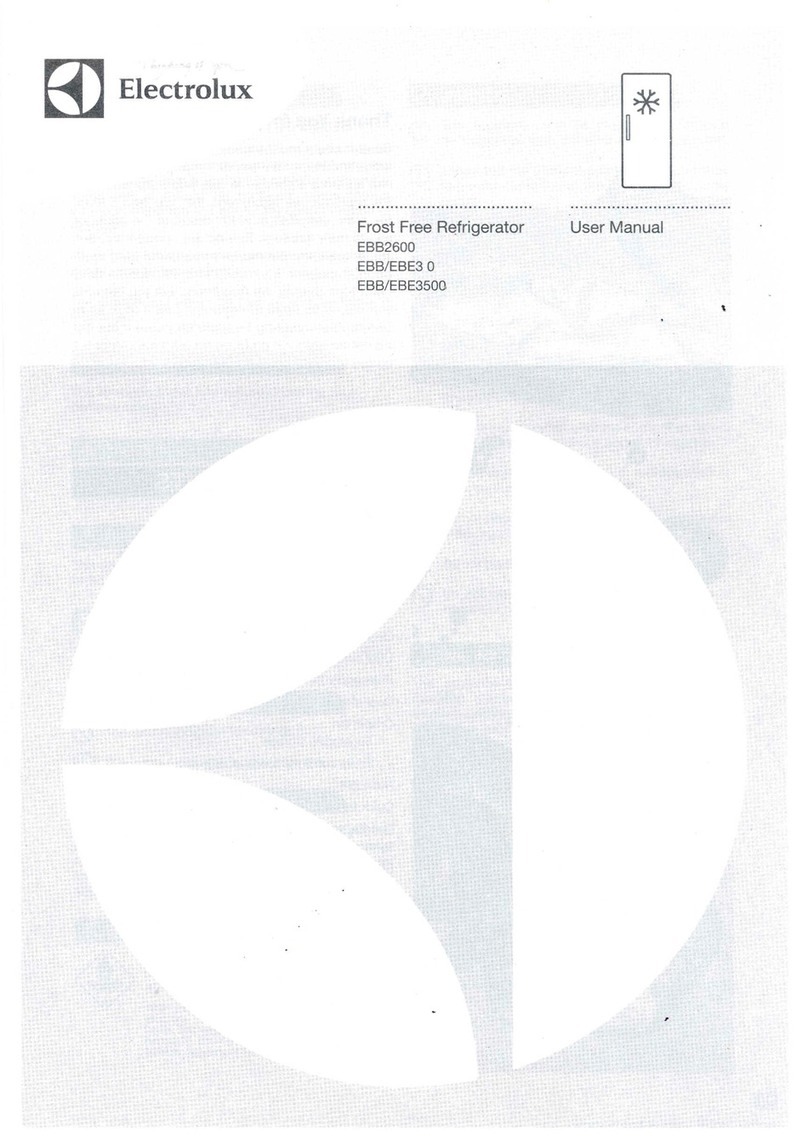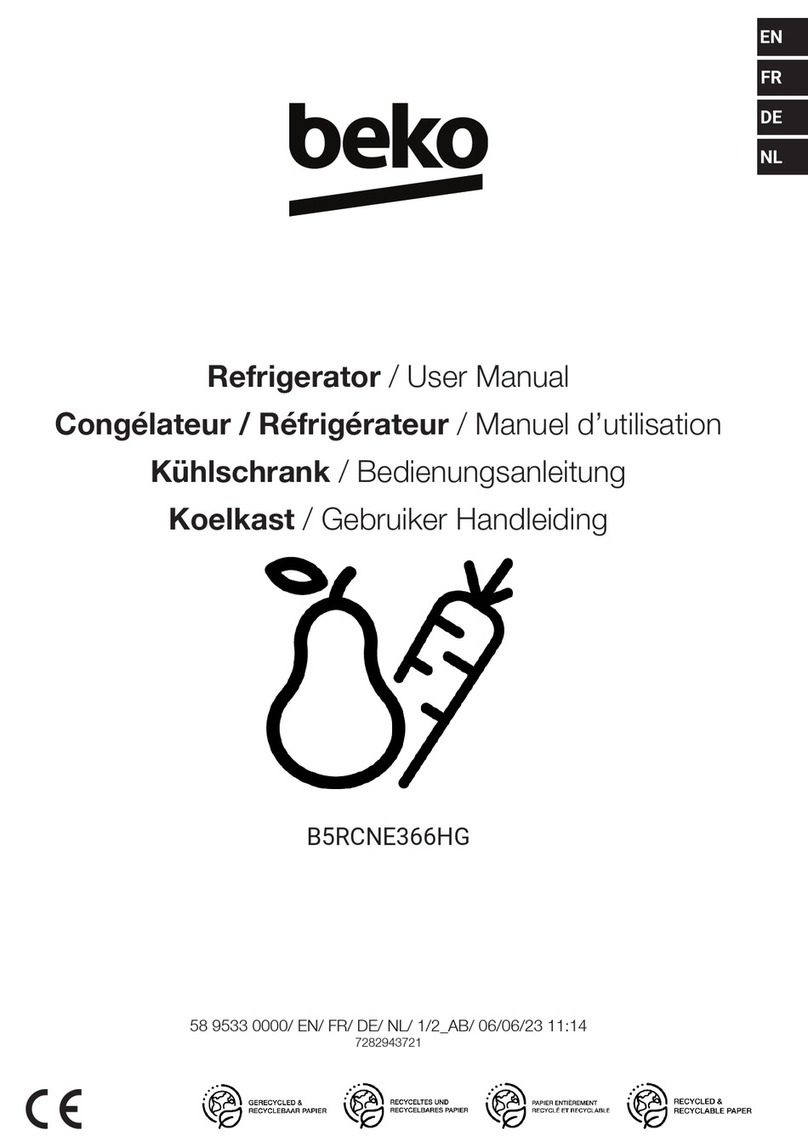5
Normal Operating Sounds
• You may hear faint ur lin or bubblin sounds
when the refri erant is pumped throu h the coils
or tubin at the rear, to the coolin
plate/evaporator or to the fixed freezer shelves.
• When the compressor is on, the refri erant is
bein pumped round, and you will hear a whirrin
sound or pulsatin noise from the compressor.
• A thermostat controls the compressor, and you
will hear a faint ’click’ when the thermostat cuts in
and out.
Making ice cubes
The appliance is provided with one or more trays for
ice-cubes trays.
Fill the tray(s) 3/4 full to ive the ice space to expand
and place them in the freezer compartment.
To release the ice cubes simply ive the tray a sli ht
twist.
Do not use sharp or metallic instruments to remove
the trays from the freezer.
Fresh ood re rigeration
To obtain the best performance, do not store warm
food or evaporatin liquids in the refri erator; do
cover or wrap the food, particularly if it has a stron
flavour.
Do not cover the shelves with any protective
material, such as paper, cardboard or plastic, which
may obstruct the air circulation throu h them.
To help you use your refri erator correctly, here are
some more useful hints:
Raw meat (beef, pork, lamb & wild fowl): wrap in
polythene ba s and place on top of the salad
crispers.
Meat can only be stored sa ely in this way or
one or two days at the most.
Fruit & ve etables: these should be thorou hly
cleaned and placed in the bottom salad crispers.
Butter & cheese: these should be placed in special
airti ht containers or wrapped in aluminium foil or
polythene ba s to exclude as much air as possible.
Milk bottles: these should have a cap and should be
stored in the bottle rack on the door.
Thawing
Frozen food, prior to bein used, can be thawed in
the frid e or at room temperature dependin on the
time available. Small food items may even be cooked
from frozen; in this case cookin will take lon er.
Any frozen food which is allowed to thaw accidentally
should either be eaten as soon as possible or thrown
away. Alternatively, if the food is uncooked and has
not been completely defrosted it can be cooked and
then refrozen.
Meat, fish and fruit should be thawed in the
refri erator compartment and small pieces of meat
can even be cooked while still frozen, but you must
ensure that it is thorou hly cooked throu h.
Ve etables should be directly immersed in boilin
water; ready-cooked dishes can be placed directly in
the oven in their aluminium wrappin .
A microwave oven is particularly suitable for thawin
any type of frozen or deep-frozen food: follow the
oven instructions, particularly re ardin the
placement of aluminium wrappin or containers in
the oven.
De rosted cooked ood must never be re rozen.
Frozen ood storage
When first startin -up or after a period of use, before
puttin the products in the freezer compartment let
the appliance run for at least two hours on the
coldest settin , then turn the thermostat knob to the
normal opertion position.
Do not exceed the stora e period indicated by the
manufacturer.
Finally, do not open the door frequently or leave it
open lon er than is absolutely necessary.
Important
Do not put carbonated liquids, (fizzy drinks etc.), in
the freezer compartment.
Ice Iollies, if consumed immediately after removal
from the freezer, can cause low temperature skin
burns.
Do not remove items from the freezer if your hands
are damp/wet, as this could cause skin abrasions or
“frost/freezer burns”.
